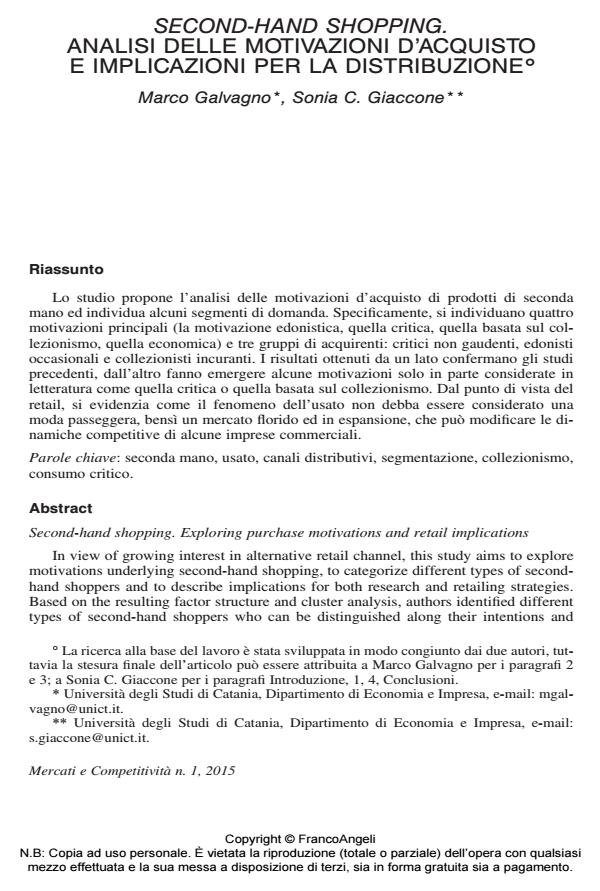Second-hand shopping. analisi delle motivazioni d’acquisto e implicazioni per la distribuzione
Titolo Rivista MERCATI E COMPETITIVITÀ
Autori/Curatori Marco Galvagno, Sonia C. Giaccone
Anno di pubblicazione 2015 Fascicolo 2015/1
Lingua Italiano Numero pagine 25 P. 123-147 Dimensione file 148 KB
DOI 10.3280/MC2015-001007
Il DOI è il codice a barre della proprietà intellettuale: per saperne di più
clicca qui
Qui sotto puoi vedere in anteprima la prima pagina di questo articolo.
Se questo articolo ti interessa, lo puoi acquistare (e scaricare in formato pdf) seguendo le facili indicazioni per acquistare il download credit. Acquista Download Credits per scaricare questo Articolo in formato PDF

FrancoAngeli è membro della Publishers International Linking Association, Inc (PILA)associazione indipendente e non profit per facilitare (attraverso i servizi tecnologici implementati da CrossRef.org) l’accesso degli studiosi ai contenuti digitali nelle pubblicazioni professionali e scientifiche
Lo studio propone l’analisi delle motivazioni d’acquisto di prodotti di seconda mano ed individua alcuni segmenti di domanda. Specificamente, si individuano quattro motivazioni principali (la motivazione edonistica, quella critica, quella basata sul collezionismo, quella economica) e tre gruppi di acquirenti: critici non gaudenti, edonisti occasionali e collezionisti incuranti. I risultati ottenuti da un lato confermano gli studi precedenti, dall’altro fanno emergere alcune motivazioni solo in parte considerate in letteratura come quella critica o quella basata sul collezionismo. Dal punto di vista del retail, si evidenzia come il fenomeno dell’usato non debba essere considerato una moda passeggera, bensì un mercato florido ed in espansione, che può modificare le dinamiche competitive di alcune imprese commerciali.
Parole chiave:Seconda mano, usato, canali distributivi, segmentazione, collezionismo, consumo critico.
Marco Galvagno, Sonia C. Giaccone, Second-hand shopping. analisi delle motivazioni d’acquisto e implicazioni per la distribuzione in "MERCATI E COMPETITIVITÀ" 1/2015, pp 123-147, DOI: 10.3280/MC2015-001007